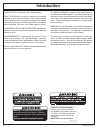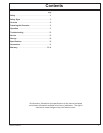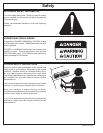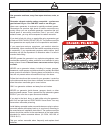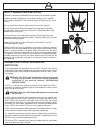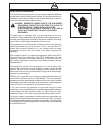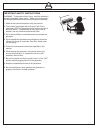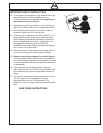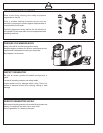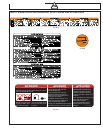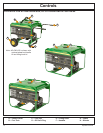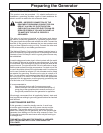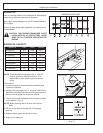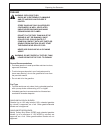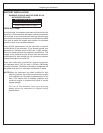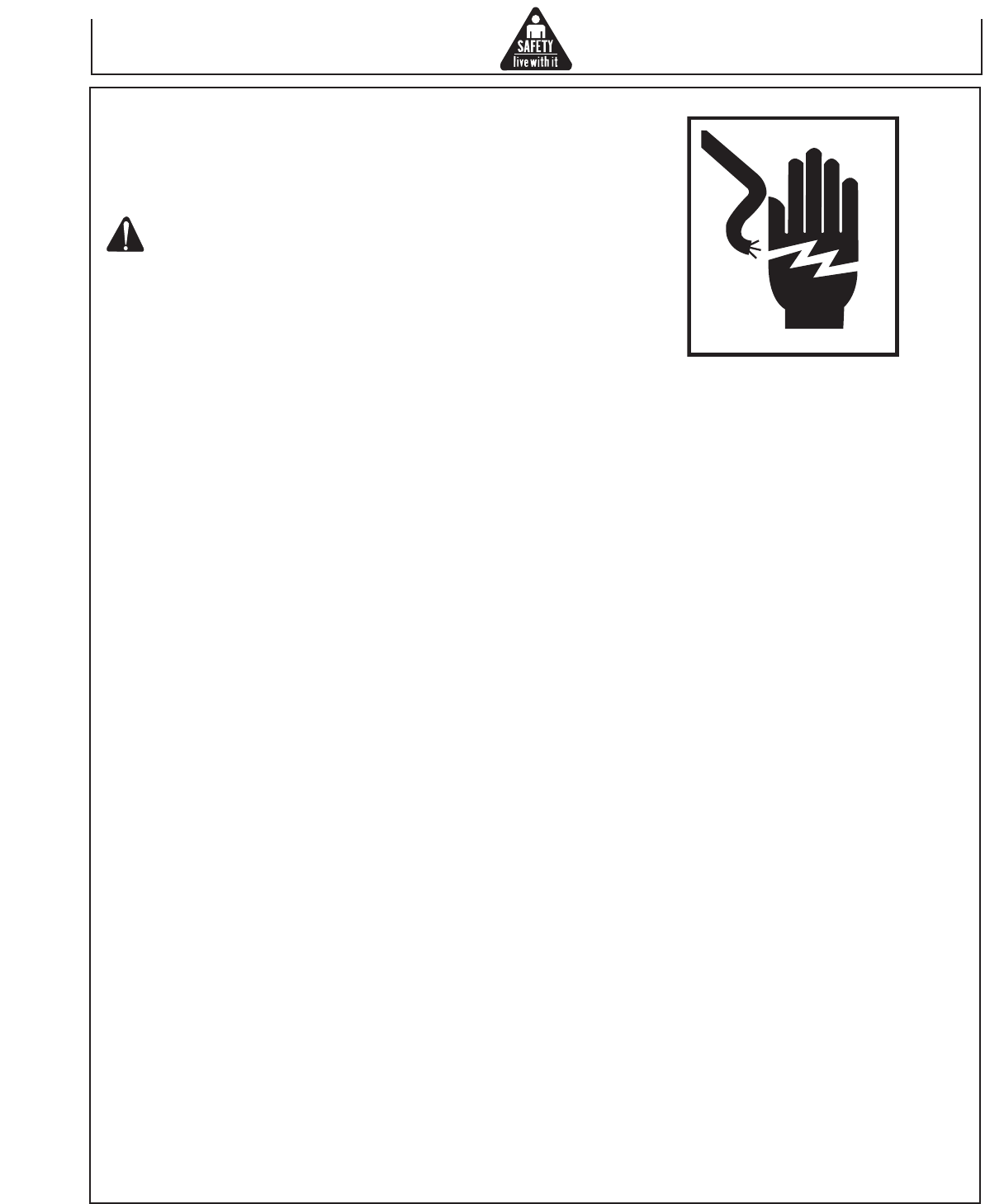
Operator’s Manual 7
ELECTRICAL HAZARDS
This product must be grounded. It has permanent conductor between
the generator (stator winding) and the frame. If it should malfunction or
breakdown, grounding provides a path of least resistance for electric
current to reduce the risk of electric shock.
DANGER - IMPROPER CONNECTION OF THE EQUIPMENT-
GROUNDING CONDUCTOR CAN RESULT IN A RISK OF
ELECTROCUTION. CHECK WITH A QUALIFIED
ELECTRICIAN OR SERVICE PERSON IF YOU ARE IN
DOUBT AS TO WHETHER THE UNIT IS PROPERLY
GROUNDED.
This generator is equipped with a grounding terminal for your
protection. Always complete the ground path from the generator to an
external ground source as instructed in the section labeled “Grounding
Instructions” in the Preparation section of this manual.
The generator is a potential source of electrical shock if not kept dry.
Keep the generator dry and do not use in rain or wet conditions. To
protect from moisture, operate it on a dry surface under an open,
canopy-like structure. Dry your hands if wet before touching the
generator.
Risk of electric shock if you operate this generator with a faulty GFCI
(Ground Fault Circuit Interrupter). Test GFCI before each use, see
Operations Instructions for further information. If GFCI fails test, DO
NOT use your generator. Contact your John Deere Customer Service
Representative.
Plug appliances directly into the generator. Or, use a heavy duty,
outdoor-rated extension cord that is rated (in watts or amps) at least
equal to the sum of the connected appliance loads. Check that the
entire cord is free of cuts or tears and that the plug has all three prongs,
especially a grounding pin.
NEVER try to power the house wiring by plugging the generator into
a wall outlet, a practice known as “back feeding”. This is an extremely
dangerous practice that presents an electrocution risk to utility workers
and neighbors served by the same utility transformer. It also bypasses
some of the built-in household circuit protection devices.
If you must connect the generator to the house wiring to power
appliances, have a qualied electrician install the appropriate equipment
in accordance with local electrical codes. Or, check with your utility
company to see if it can install an appropriate power transfer switch.
For power outages, permanently installed stationary generators are
better suited for providing backup power to the home. Even a properly
connected portable generator can become overloaded. This may result
in overheating or stressing the generator components, possibly leading
to a generator failure.




